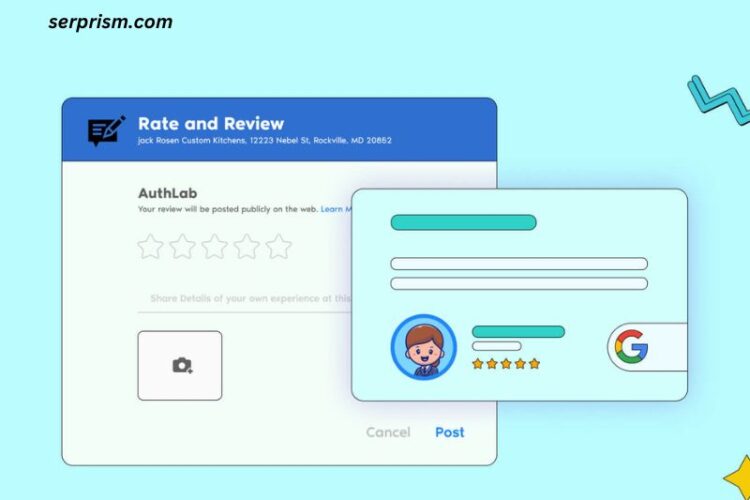
Noindex Whitpaper Pages have long been a critical component of content marketing strategies, especially for businesses aiming to establish thought leadership, generate leads, and educate their audience. However, when it comes to SEO, questions arise about how to handle whitepaper pages—specifically, whether you should noindex them. This question is particularly important for SEO professionals and digital marketers looking to optimize their site for better rankings, user engagement, and search engine visibility.
In this comprehensive guide, we will explore the pros and cons of noindexing whitepaper pages, how it impacts your site’s SEO, and provide actionable recommendations on how to handle this decision.
What is a Noindex Whitpaper Pages?
Before diving into the SEO implications, let’s first define what a whitepaper is. In the world of digital marketing, a whitepaper is an authoritative, in-depth report or guide that addresses a specific topic, problem, or issue, often with a focus on providing solutions. Whitepapers typically appeal to a business-focused audience and are used to showcase a company’s expertise, promote products or services, and educate customers. They are commonly used in B2B marketing, particularly by SaaS companies, consultancies, and tech firms.
Whitepapers differ from blog posts or articles in that they are often longer, more formal, and require more detailed research. As such, they tend to be gated content, meaning visitors must provide personal information, such as their email addresses, in exchange for access.
What Does “Noindex” Mean in SEO?
The term Noindex Whitpaper Pages refers to an instruction you can place in the HTML code of a web page to tell search engines not to index that specific page in their search results. When a page is noindexed, search engines like Google will crawl and read the content on the page, but it will not appear in the search engine results pages (SERPs). This can be a helpful SEO strategy if you don’t want certain pages to show up in search results.
The noindex tag can be applied via the following methods:
- Using the meta robots tag:
<meta name="robots" content="noindex"> - Setting HTTP headers
- Using the X-Robots-Tag for non-HTML files like PDFs
In the context of whitepapers, applying the Noindex Whitpaper Pages tag means that even though search engines may crawl the content, it won’t be counted toward your site’s search rankings.
Should You Noindex Whitepaper Pages?
The decision of whether or not to Noindex Whitpaper Pages depends on several factors, including your overall content strategy, SEO goals, and the nature of your whitepaper content. Here are some key considerations to help you make an informed decision.
1. Lead Generation Strategy and Gated Content
For businesses that use Noindex Whitpaper Pages as a means of generating leads, the focus is often on capturing user information—such as email addresses—before providing access to the content. In this case, the whitepaper is typically gated, meaning it is not freely available to the public without providing personal details.
However, if the whitepaper page is noindexed, this might reduce its chances of ranking in search engines. This could be problematic for businesses that rely on organic search to drive traffic to their site. You want to ensure that search engines can index the page, so it shows up in search results, driving potential leads to the gated content.
For this reason, many SEO experts recommend allowing search engines to index whitepaper pages, but only if the content is high-quality, unique, and valuable. The idea is to use the whitepaper as a lead magnet while still benefiting from the SEO power of ranking in search engines.
2. Noindex Whitpaper Pages and SEO Content Value
Whitepapers often contain high-value, in-depth content. They can rank for specific keywords or long-tail phrases that are highly relevant to your business’s target audience. If you noindex your whitepaper pages, you are essentially eliminating a valuable SEO asset.
Whitepapers can attract organic traffic and backlinks, which can help improve your website’s domain authority and search engine rankings. For example, if you’ve published a well-researched, data-driven whitepaper on a niche topic within your industry, it could potentially rank for long-tail keywords that are highly relevant to your audience.
Rather than noindexing these pages, many businesses choose to index them in order to boost their overall SEO efforts. However, it’s crucial that your whitepaper provides valuable content that aligns with the search intent of your target audience.
3. Duplicate Content Concerns
A major concern with Noindex Whitpaper Pages is the risk of duplicate content, particularly when they are offered in multiple formats or when parts of the whitepaper are repurposed on other pages of your website (e.g., blog posts, case studies, product pages). Duplicate content can confuse search engines and result in penalties, which could hurt your rankings.
If the whitepaper page is a direct replica of other content on your site, or if it doesn’t provide unique value, noindexing the page might be a good idea. Alternatively, you could consider offering a unique version of the content that is specifically designed for SEO purposes—such as a landing page that highlights the key insights of the whitepaper with optimized content.
4. Page Experience and User Intent
SEO is not just about rankings—user experience (UX) plays a huge role in how Google evaluates pages. If the whitepaper page is designed solely for lead generation, with little attention paid to the user experience or the information architecture of the page, it may not provide the best experience for your visitors.
In this case, you might want to reconsider noindexing the page or optimizing it for both users and search engines. This includes adding high-quality metadata, improving the page’s loading speed, and ensuring it’s mobile-friendly. You can still capture leads while providing a seamless and engaging experience for your visitors.
5. Strategic Use of Noindex Whitpaper Pages for Internal Pages
Sometimes, you may want to noindex specific internal pages to prevent them from negatively affecting your site’s SEO. For example, if you have a large number of whitepapers that aren’t optimized or are only available for a limited time, noindexing these pages might help you focus your SEO efforts on higher-value content.
In this scenario, you could consider the following strategies:
- Noindexing low-value whitepapers: If certain whitepapers are outdated, irrelevant, or don’t align with your current SEO objectives, noindexing them would prevent them from cannibalizing the rankings of more important content.
- Noindexing thank-you pages: If the whitepaper download is preceded by a thank-you page that’s not adding any significant SEO value, you can apply the noindex tag to these types of pages as well.
6. Long-Term SEO Strategy
Think about the long-term value of your whitepaper content. If you plan to update or repurpose whitepapers on a regular basis, you might want to allow them to be indexed by search engines. The longevity of the content can drive traffic for months or even years after publication, making it a valuable asset for your website.
Allowing search engines to index whitepapers that are regularly updated, particularly with fresh research or insights, can help keep your website relevant in the eyes of both users and search engines.
Best Practices for Handling Whitepapers and SEO
If you decide that Noindex Whitpaper Pages isn’t the best option, there are several best practices you can follow to ensure you maximize the SEO benefits of your whitepapers:
- Optimize Your Whitepaper Landing Page
Ensure that the page hosting your whitepaper is optimized for search engines. Include a keyword-rich title, meta description, and headers, and incorporate internal links to other relevant pages on your site. - Target Long-Tail Keywords
Whitepapers often target very specific topics. Take advantage of this by optimizing for long-tail keywords that your target audience is likely to search for. - Include High-Quality Content
Google rewards high-quality, informative content. Ensure that your whitepaper provides real value to users, addressing their pain points and offering actionable solutions. - Use Structured Data
If your whitepapers are rich in data, charts, or research, consider using structured data (Schema markup) to help search engines better understand the content. This can help with rich snippets and increase your visibility in search results. - Regularly Update Your Whitepapers
To maintain their SEO value, keep your whitepapers up-to-date with the latest information. This will signal to Google that the content is fresh and relevant. - Link to the Whitepaper from Relevant Blog Posts
Create blog posts that link to your whitepapers. This helps build internal link equity and provides additional SEO signals to search engines. - Avoid Thin Content
If the content of your whitepaper landing page is too thin or sparse, it’s better to noindex the page. Thin content doesn’t provide enough value to users and could negatively impact your SEO efforts.
Conclusion
In conclusion, whether or not you should Noindex Whitpaper Pages depends on your business’s specific goals, your SEO strategy, and the quality of the content. If your whitepapers are valuable, informative, and optimized, they should generally be indexed by search engines to drive organic traffic. However, if the whitepaper page offers minimal value, contains duplicate content, or isn’t contributing to your SEO strategy, applying the noindex tag may be the right decision.
Ultimately, the key is to evaluate each whitepaper individually, considering its role in your broader marketing and SEO efforts. By carefully balancing your content’s SEO value and lead generation objectives, you can make an informed decision about whether to index or noindex your whitepaper pages for maximum SEO impact.




